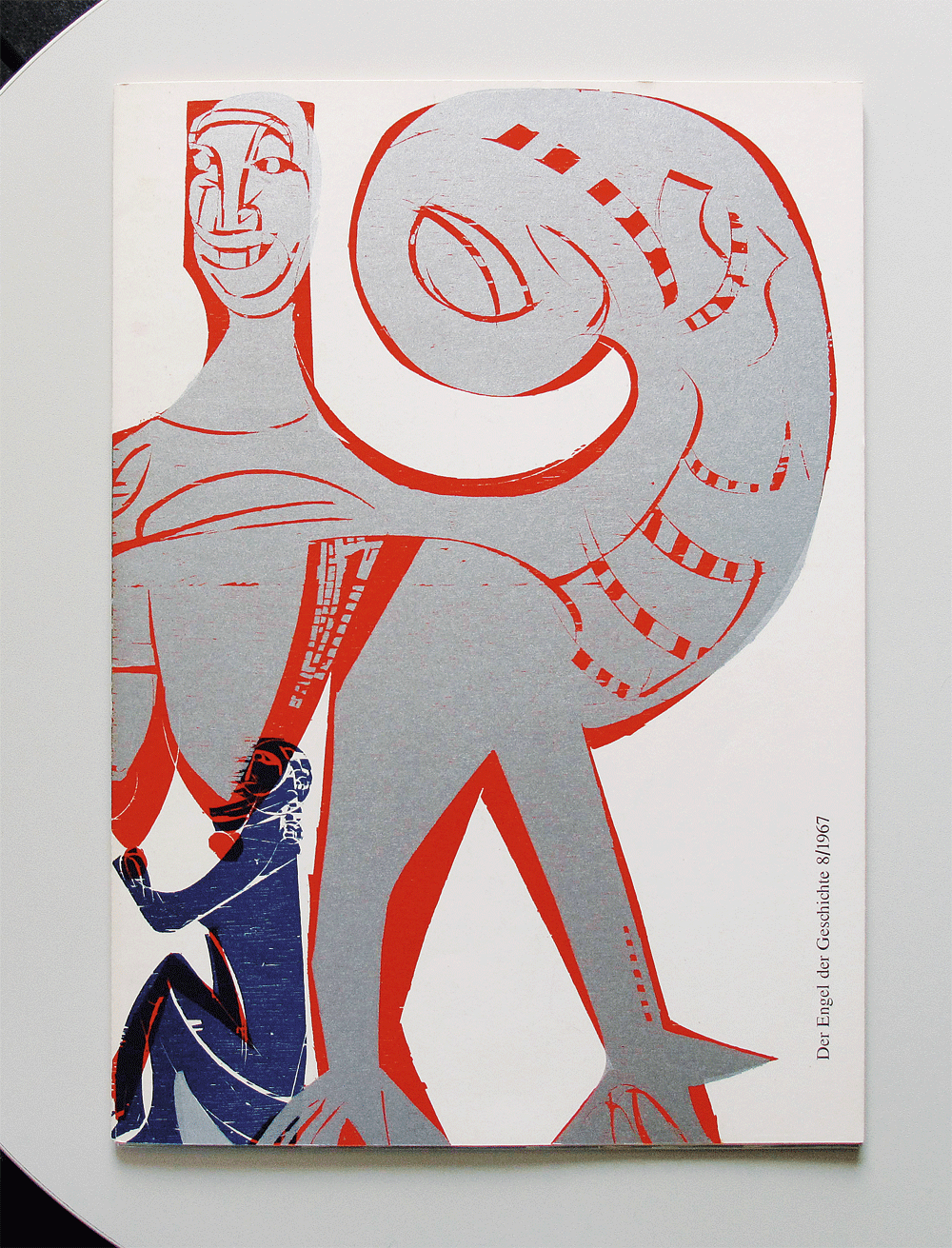H.A.P. Grieshaber
Hollybush Gardens, London, UK
Hollybush Gardens, London, UK

From 1964 until his death in 1981, German artist H.A.P. Grieshaber published Der Engel der Geschichte (The Angel of History), a magazine which responded to political and social issues with a dynamic synthesis of literature and original graphic art. Its title was taken from Walter Benjamin’s description of Angelus Novus, a 1920 painting by Paul Klee, which Benjamin interpreted as an angel who is struggling against the violent repetitions of history, while being propelled irresistibly into the future by the storm of progress. Grieshaber seized upon the possibility for redemption in this apocalyptic vision, assigning each publication a guardian angel with its own Talmudic task: ‘to address a tort, to fight death, as is becoming for an angel.’ Of the 23 issues that were published (as editions of 1,000), eight were presented at Hollybush Gardens, a concisely powerful display which conveyed the project’s ambitious ideals as well as the technical ingenuity and humanity of its founder. Nationalism, the environment, art education and the treatment of the mentally ill were just some of the subjects raised here, through poetry, interviews, documentary photography and (most vividly of all) Grieshaber’s remarkable wood-cuts. London-based artist Andrea Büttner (recent winner of the Max Mara Art Prize), who curated the exhibition, uses traditional craft methods in her own work; here she acknowledged the example of her compatriot, a progressive who employed similarly archaic techniques to discuss topical concerns, in a bid, as he put it, ‘for reality’.
Grieshaber’s pacifism led to the banning of his work under the Nazis. Having been apprenticed to the printing trade at the age of 17, he was forced to become a labourer and newspaper delivery man, developing his methods in secret and risking only the occasional exhibition under a pseudonym. The examples at Hollybush Gardens revealed his mature style to be at once inventive and resolutely primitive; monumental but full of humour. For example, The Angel of Greece (1967) is no bloodless seraph but a muscular four-footed beast, with huge crescent wings and a lashing, sensuous tail. Grinning toothily, its dangling teats are suckled by a tiny human figure; its back supports a mythological bird – perhaps the peacock which, along with an ape and a pot-bellied pig, were Grieshaber’s companions in later years. His economy of line and adventurous use of colour are characteristic; one half of this angel glows orange and silver, the other is gold edged with dark blue shadows. In The Angel of the East (1965) an angular Cossack wears his gun like an extra limb; he is guarding the illustration’s border, within which is a frieze of silhouetted grey figures and the onion domes of Russian churches, over-printed with bright red stars. An image from Stop Whaling! (1974) features two basking leviathans, outlined in generous scoops of ink, one emitting a cartoon plume of spray. On the next double-page spread, the block has been wiped to create a more abraded surface – the battle between the whale and his hunters. As a shattered fishing boat flies into the air the humans are tossed upside down, their scissoring legs echo the shape of the creature’s tail as it slips beneath the waves. Inspired by the medieval origins of German art and the Utopian principles of his Expressionist predecessors, Grieshaber’s work resurrects the wood-cut, reinventing an ancient technique for present day purposes.
This was a fitting tribute to Grieshaber, an artist who deserves much greater international attention and whose commitment to social change was hauntingly expressed by the photographs lining one of the gallery’s walls. These images, published posthumously in The Angel of The Disabled (1981), showed teenagers with learning difficulties from East and West Germany looking at ‘The Dance of Death in Basel’ (1965–6), a macabre yet joyful series in which death and the citizens are interlaced like lovers. In the students’ animated body language and the transcripts of their reactions may be read the true magnitude of Grieshaber’s accomplishment.
























